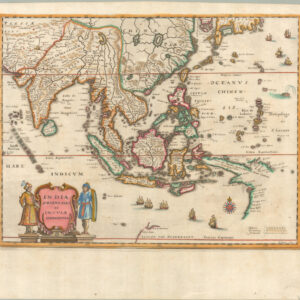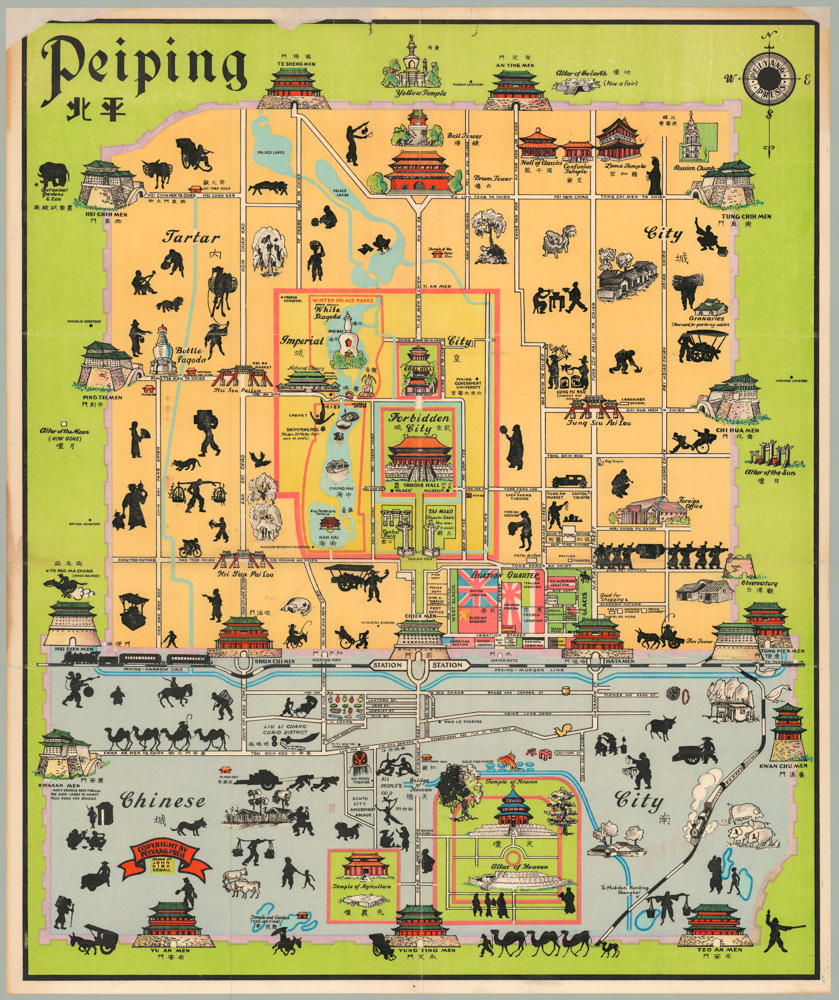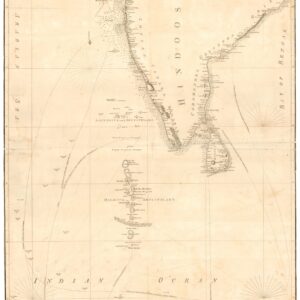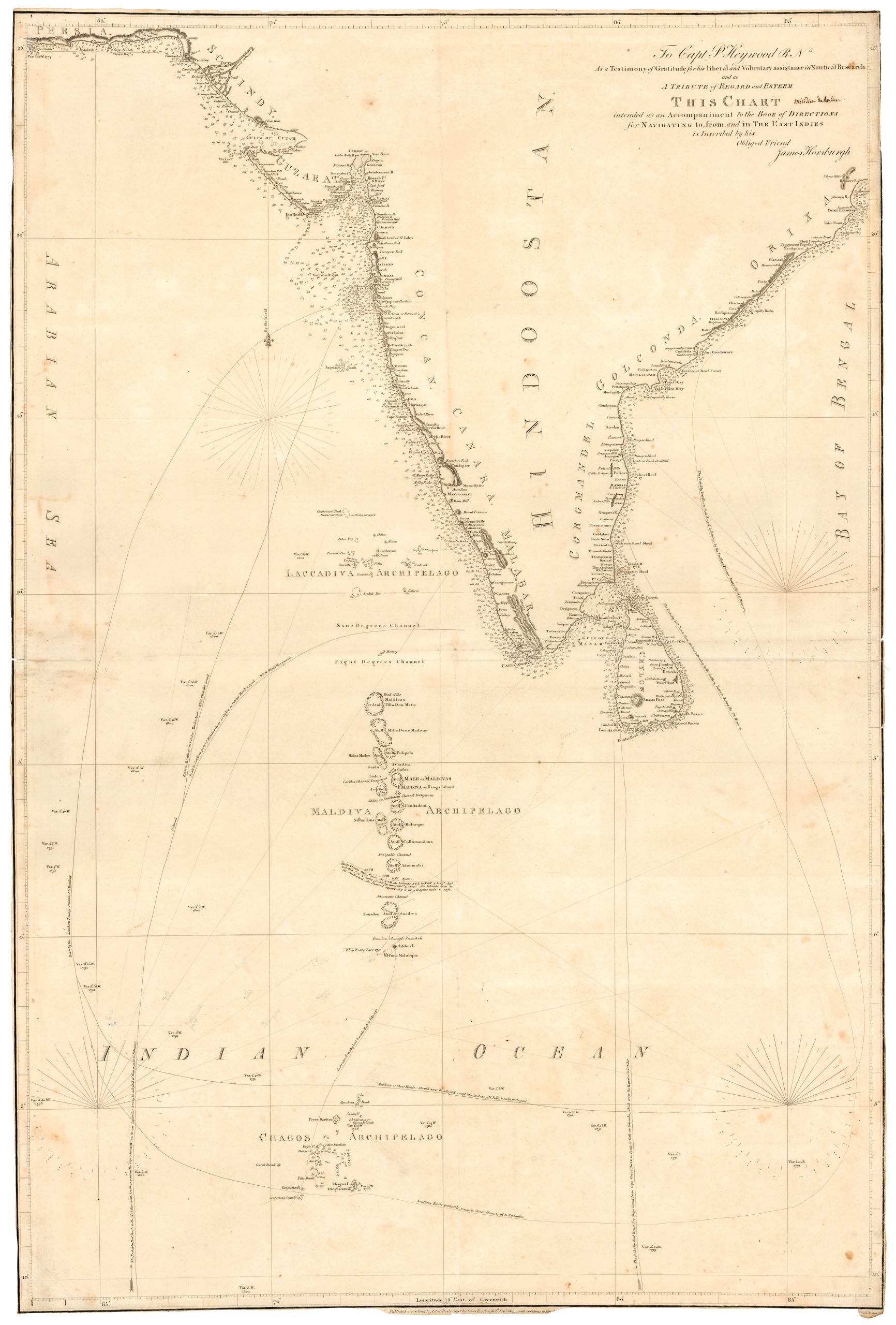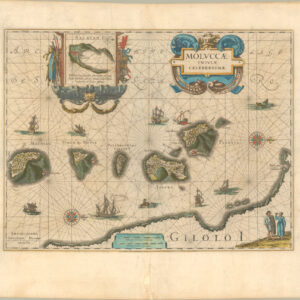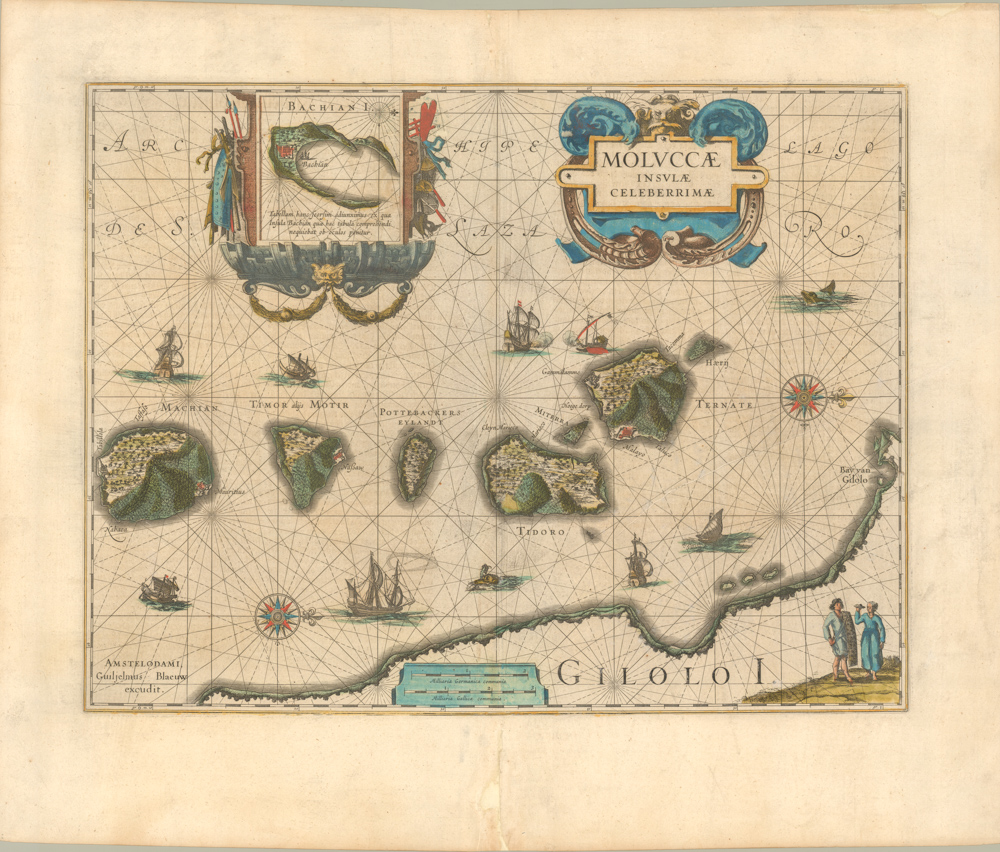An exceptional and rare 1903 large-format map of New Caledonia.
Nouvelle Calédonie dressée pour l’Union Agricole Calédonienne.
$2,800
1 in stock
Description
This rare large-format map of the island of New Caledonia, published in 1903 at a scale of 1:300,000, was created for the benefit of the Union Agricole Calédonienne (U.A.C.), an association founded in 1894 to promote New Caledonia in mainland France. Covering Grande Terre (the main island) and its closest islets—from Yandé in the north to the Isle of Pines in the south—the map reflects a moment of profound transition in the colony’s history, coinciding with the scheduled end of penal deportation and an urgent push by settlers to redefine the island’s future.
Features and Omissions
The map includes a detailed legend marking “established free colonization centers,” “indigenous reserves,” roads, trails, railways and mining tramways, elevations, forests, and wetlands. In the lower right, a large inset titled “Environs de Nouméa” depicts what is now the Greater Nouméa area, including Dumbéa, Saint Louis, and Nou Island. While hospital and school buildings are named, prison facilities are left unnamed—a clear omission likely intended to suppress reminders of the colony’s penal past. Though deportation was officially halted in 1897, many penal colonies remained operational, and the labor of non-pardoned prisoners was still central to the economy.
Precursor Map for the 1900 Paris Exposition
The 1903 edition was a streamlined follow-up to a grand 8-meter relief map created in 1900 for the Paris Universal Exposition. That earlier version, made by Gendarmerie Commander Laporte with funding from the U.A.C. and colonial authorities, was displayed alongside products from the colony’s agricultural, mining, and industrial sectors. Today, this monumental relief map remains on display at the Territorial Archives Center of Nouméa.
Colonial Messaging and Racial Ideology
In its official promotional materials, the U.A.C. explicitly stated its desire to present a vision of New Caledonia devoid of its indigenous Kanak population. A 1900 brochure emphasized that “serious minds” had from the start rejected “any idea of exhibiting what is a thing of the past: the Kanaks.” Instead, the U.A.C. promoted immigration and settler colonization as the future, arguing that the native population could be “uplifted” through their labor for European settlers. The goal was to attract markets, capital, and new settlers to supplant the island’s penal economy.
Subsequent Editions and Enduring Legacy
Following the favorable reception of the relief map, the U.A.C. commissioned a more practical edition—the present 1:300,000 scale version. Though reduced in size, it retained the promotional and strategic aims of its predecessor. This version soon became the standard reference map for the island. It was later updated by Nicolas Ratzel and reissued in 1939 under the title Carte de la Nouvelle-Calédonie dressée par le Commandant Laporte. A wartime version was published by the U.S. Army in 1942 for strategic use in the Pacific Theater during World War II, reflecting the map’s lasting utility and symbolic role in successive waves of colonization and military engagement.
Cartographers and Production
The map’s creation involved prominent figures in colonial cartography. Rémy Hausermann, a Protestant Calvinist and regular contributor to French Catholic Missions, partnered with Augustin Challamel, a publisher known for his large-format maps. The scale of the project—especially the massive 1:100,000 map composed of eight sheets measuring 104 × 69 cm—indicates the substantial budget and institutional backing behind the U.A.C.’s campaign to rebrand and resell the island to metropolitan investors and policymakers.
Rarity
To our knowledge, this is the first copy to appear on the market in several decades. We have not found another copy in dealer catalogs or auction archives going back more than 50 years. WorldCat (OCLC) lists it in only three libraries: Paris (BNF, two copies), Sydney (State Library of New South Wales), and Berlin (Staatsbibliothek).
Cartographer(s):
The Union Agricole Calédonienne (U.A.C.), founded in 1894, was a settler-led association dedicated to promoting the agricultural and economic development of New Caledonia as a French colony. Comprised largely of European landowners and entrepreneurs, the U.A.C. sought to attract investment and settlers from mainland France while lobbying against the island’s longstanding penal system, which it saw as an obstacle to private land ownership and commercial progress. The organization played a central role in reshaping the colony’s image, sponsoring promotional materials—including maps and exhibits at the 1900 Paris Universal Exposition—and pushing for a future rooted in free colonization and settler-driven industry. Its influence extended into policy and public discourse, often reinforcing colonial ideologies that marginalized the indigenous Kanak population in favor of European expansion.
Condition Description
Very good. Dissected and laid on linen. Even toning throughout.
References
